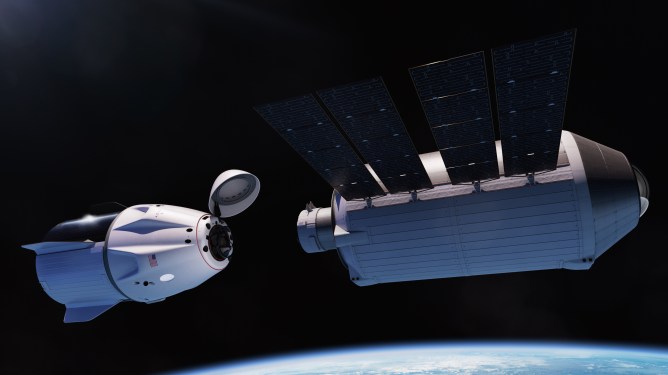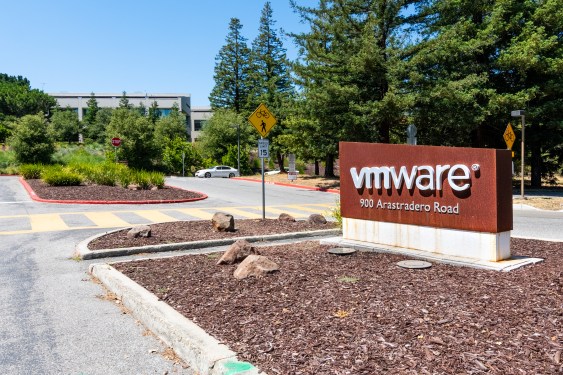As the world moves towards a new era of space exploration and commercialization, private companies are emerging as major players in the field. One such company, Vastis, is making significant strides by building a private microgravity research lab as part of its wider Haven-1 station plans.
The Lab: A New Platform for Microgravity Research
The lab includes 10 payload slots that are equivalent to 10 ‘middeck lockers’ on the International Space Station (ISS). Each slot can accommodate payloads up to 30 kg (66 lb) while providing 100W of continuous power and Ethernet data connectivity. This is a significant upgrade from the ISS, which has limited space for research experiments.
The payloads will be operated by a crew onboard Haven-1, and researchers will be able to return samples or products from the lab via capsules like SpaceX’s Dragon. The astronauts will be assisted by ground operators via Starlink laser links. Vast announced its partnership with Starlink in April, which is expected to play a crucial role in the lab’s operation.
A Bridge Between the ISS and Private Stations
Vast CEO Max Haot said in a statement, "The ISS may be on its way to be retired in 2030, but the institutional knowledge deserves a new platform for future microgravity research and manufacturing innovation. Our Haven-1 Lab is designed to provide that bridge well before the eventual retirement of ISS."
This statement highlights the significance of Vast’s efforts in creating a new platform for microgravity research and manufacturing innovation. As the ISS retires, there will be a need for private companies like Vastis to fill the gap.
First Partners for the Lab
Vast is bringing on Redwire Space and European space biotech company Yuri as its first partners in the lab. Both firms have extensive experience operating on the ISS. This partnership is significant, as it demonstrates Vast’s commitment to collaboration with other companies in the field.
Commercialization of Space: A New Era
The commercialization of space is gaining momentum, and private companies like Vastis are at the forefront of this movement. The research that will be conducted on Haven-1 may look different from what has been onboard the ISS. Space is limited on the station, and NASA and its partners evaluate potential experiments for their scientific value.
In contrast, commercial ventures like Vast’s lab may have different priorities. As a result, the research conducted on private stations may focus more on practical applications rather than purely scientific inquiry.
NASA’s Response
NASA is likely encouraged to see a commercial station provider with plans to launch so soon. Agency officials have repeatedly expressed a desire for an overlap between the ISS and private stations on orbit. This partnership will ensure that there is no gap in research capabilities when the ISS retires.
Conclusion
The emergence of companies like Vastis and its efforts to create a new platform for microgravity research and manufacturing innovation mark a significant milestone in the commercialization of space. As private companies continue to play a major role in space exploration, it will be interesting to see how they adapt to changing priorities and technologies.
Vast’s Haven-1 Station Plans
The launch of the private microgravity research lab is just one part of Vast’s wider plans for its Haven-1 station. The company aims to create a commercial space station that can accommodate multiple users, including governments, companies, and individuals.
Key Features of the Lab
- 10 payload slots: equivalent to 10 ‘middeck lockers’ on the International Space Station (ISS)
- Payload capacity: up to 30 kg (66 lb) per slot
- Power supply: 100W of continuous power
- Data connectivity: Ethernet data connectivity
Benefits for Researchers
The lab’s payload slots will provide researchers with a flexible and efficient way to conduct experiments in microgravity. The ability to return samples or products from the lab via capsules like SpaceX’s Dragon will also streamline the research process.
Collaboration between Vast and Starlink
Vast announced its partnership with Starlink in April, which is expected to play a crucial role in the lab’s operation. The partnership will enable researchers to communicate with the lab via high-speed internet links.
Timeline for the Launch of the Lab
The exact timeline for the launch of the lab has not been announced yet. However, Vast’s plans indicate that it aims to create a commercial space station that can accommodate multiple users in the near future.
Conclusion
Vastis’ efforts to build a private microgravity research lab are significant milestones in the commercialization of space. As private companies continue to play a major role in space exploration, it will be interesting to see how they adapt to changing priorities and technologies.
The emergence of companies like Vastis is expected to have far-reaching implications for the field of space research. By creating new platforms for microgravity research and manufacturing innovation, these companies are poised to drive progress in areas such as materials science, biotechnology, and more.
Appendix: Related Developments
- Commercialization of Space: The emergence of private companies like Vastis is driving the commercialization of space.
- NASA’s Plans for Private Stations: NASA officials have expressed a desire for an overlap between the ISS and private stations on orbit.
- Advances in Technology: Advances in technology, such as high-speed internet links, are enabling researchers to communicate with labs in space more efficiently.




